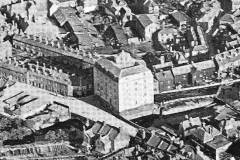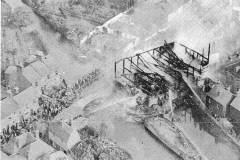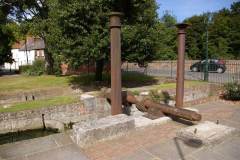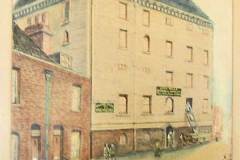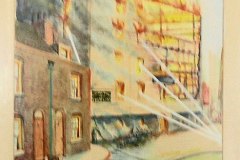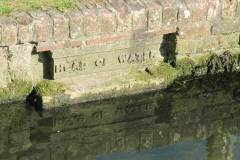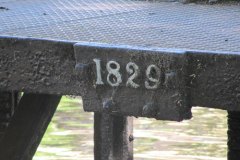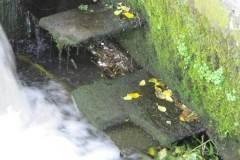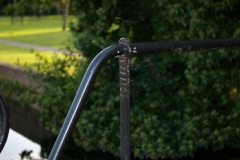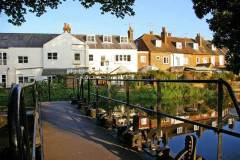For nearly 150 years the second largest Canterbury building by a wide margin was the Abbot’s Mill, standing where Radigund Street bridge now crosses a branch of the Great Stour (Image 1). It was designed by John Smeaton (of Eddystone light house fame), built in 1792 at a cost of £8000 and burnt to the ground in a spectacular fire in 1933 (Image 2). The 100 feet high six storey building with octagonal turret replaced an earlier mill known as Brown’s mill. Two water wheels, each 16 feet diameter, produced ‘500 quarters of corn weekly’ despite a drop in water level only a little over 5 feet. Earlier mills on the site had been owned by St Augustine’s (hence the name) but it was owned by the City from the dissolution in 1538 up until Victorian times. Owners in Victorian times have included James Simmons and the artist Sydney Cooper, who purchased it when he married Mary Cannon the miller’s daughter. There is no evidence that Cooper had any interest in milling or (as often asserted) in painting views from the octagonal look-out. He was simply easing the finances of his bride’s father. All that now remains of the Smeaton building is the spindle of one of the wheels and two iron pillars.
Reminiscences of the young miller in charge of the mill during the years leading up to the fire make interest reading. He describes how they avoided walking up five flights of stairs by hanging on to the rising bags of grain, banging through trap doors as they went. He also mentions night shift work when, if the miller dozed off, the gearwheels slowed to the point where water backed up and flooded the street at Eastbridge. The nearby ‘Mill House’ reflects key architectural features of Smeaton’s mill, including a pretend lookout on top and timber cladding below.
What to see:
- the remaining metal work from the 1792 mill (Image 3)
- pictures of the original mill and the fire, displayed on the walls of the adjacent Millers Arms pub (Image 4 and 5)
- the water height stone (Image 6) set to gauge the water level as it entered the mill – the City regulated water levels to ensure that upstream mills did not disadvantage those lower down the river
- a date marker of 1829 on the weir bridge (Image 7)
- stones set in recent years in one water wheel channel (Image 8), intended for use by otters (none have yet turned up!) – and vertical boards in the other wheel channel to assist fish moving up river
- ‘fullering marks’ (Image 9) on the weir bridge hand rails (Image 10) – left by blacksmiths who needed to extend the metal length using fullering and swaging tools
Access: open during daylight hours
Sources: Panton (1988) for the John Simmons connection; Tatton-Brown (1994); Kentish Register 1794 p.188-9; the Mills Archive web site
DL

